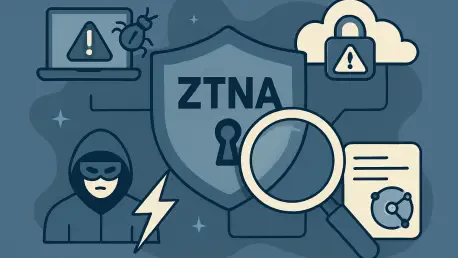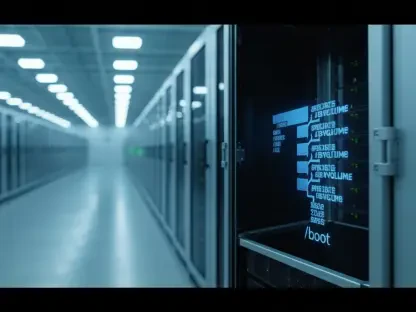In the rapidly evolving landscape of cybersecurity, Zero Trust Network Access (ZTNA) solutions have emerged as a cornerstone for protecting corporate networks by replacing outdated VPNs with more granular and secure access controls. However, recent revelations from security researchers at a prominent industry conference have cast a shadow over the reliability of these systems. Critical vulnerabilities in products from major vendors have exposed alarming risks, raising questions about whether these tools are truly delivering on their promise of enhanced security. The findings suggest that malicious actors can exploit weaknesses to bypass authentication, escalate privileges, and access sensitive data across organizations. This unsettling development underscores an urgent need for stronger safeguards and greater accountability in the industry, prompting a deeper examination of the flaws undermining these advanced solutions.
Uncovering Critical Vulnerabilities in ZTNA Platforms
Authentication Bypass: A Widespread Threat
The core of the recent findings centers on authentication bypass vulnerabilities that affect leading ZTNA platforms, creating significant risks for enterprise environments. A specific flaw in one major vendor’s system, identified as CVE-2025-54982, enables attackers to sidestep SAML authentication through unsigned assertions, granting unauthorized entry to web proxies and internal resources. Similarly, another provider’s platform suffers from a documented issue, CVE-2024-7401, tied to insecure configurations in Identity Provider enrollment mode, which has been exploited in real-world scenarios for over a year. These gaps reveal a troubling pattern of insufficient validation in authentication mechanisms, allowing threat actors to infiltrate systems with relative ease. The persistence of such flaws, even after being identified, highlights a critical disconnect between the theoretical security of ZTNA and its practical implementation across diverse corporate networks.
Beyond the specific technical issues, the broader implications of authentication bypass vulnerabilities point to systemic challenges in securing multi-tenant environments. In some platforms, non-revocable organizational keys have been found to facilitate cross-organization user impersonation, amplifying the potential for widespread breaches. Another vendor’s service revealed a hard-coded key vulnerability in an SFTP server storing client logs with sensitive data, posing a severe risk of cross-tenant exposure. These discoveries emphasize that the foundational principle of Zero Trust—never trusting and always verifying—can be undermined by flaws that vendors have yet to fully address. The ongoing nature of these exploits signals an urgent need for organizations to reassess their reliance on current configurations and push for more robust security measures from solution providers.
Privilege Escalation: Endpoints at Risk
Another alarming dimension of the research focuses on privilege escalation vulnerabilities that threaten endpoint security within ZTNA ecosystems. In one vendor’s client software, a local flaw allows attackers to manipulate connections with rogue servers, achieving SYSTEM-level access on affected devices. This issue, still awaiting formal identification, demonstrates how tools designed to protect can instead become vectors for attack when not properly secured. The ability to escalate privileges in this manner not only jeopardizes individual endpoints but also risks compromising entire networks, as attackers can pivot to deeper layers of infrastructure. Such findings challenge the notion that ZTNA inherently minimizes trust, revealing that endpoint interactions remain a weak link in many deployments.
Further analysis of privilege escalation risks shows that the problem extends beyond isolated incidents to reflect broader design and validation shortcomings. The failure to adequately secure client-server communications in these systems creates opportunities for sophisticated adversaries to exploit trust relationships. This vulnerability underscores a critical oversight in ensuring that every component of a ZTNA solution adheres to stringent security standards. As organizations increasingly adopt these platforms to safeguard remote and hybrid workforces, the potential for such exploits to disrupt operations grows exponentially. Addressing these endpoint risks demands not only technical patches but also a cultural shift toward proactive security testing and continuous monitoring to prevent similar issues from arising in future iterations.
Addressing the Gap Between Promise and Reality
Implementation Challenges in Organizational Deployment
Turning to the practical challenges of ZTNA adoption, it becomes evident that the technology’s effectiveness often hinges on how it is deployed and maintained within organizations. Many enterprises lack the resources or expertise to apply necessary patches or reconfigure systems to mitigate known risks, leaving them exposed to persistent vulnerabilities. The slow response from some vendors in addressing critical flaws further exacerbates this issue, as unpatched systems remain in use long after exploits are identified. This gap between the innovative intent of ZTNA and the reality of its implementation reveals a pressing need for better education and support to ensure secure usage. Without a clear strategy for deployment, even the most advanced solutions can fall short of protecting corporate networks from evolving threats.
Moreover, the complexity of integrating ZTNA solutions into existing infrastructures often leads to misconfigurations that undermine security. Organizations may inadvertently leave default settings unchanged or fail to enforce strict access policies, creating entry points for attackers. The research highlights cases where known vulnerabilities persisted due to a lack of awareness or prioritization of security updates. Bridging this divide requires a collaborative approach, where vendors provide clearer guidance and more accessible tools for secure configuration, while organizations invest in training and resources to maintain robust defenses. Only through such synergy can the full potential of ZTNA be realized, ensuring that it serves as a genuine barrier against cyber threats rather than an unintended liability.
Strengthening Accountability and Future Safeguards
Reflecting on the path forward, the exposed vulnerabilities serve as a wake-up call for the cybersecurity community to demand greater accountability from ZTNA vendors. The prolonged exploitation of certain flaws, some active for over a year, points to delays in vendor response that left customers at risk. Establishing stricter timelines for patching and transparent communication about risks has become essential to rebuild trust. Industry stakeholders also recognize the importance of independent audits and rigorous validation processes to identify weaknesses before they can be exploited by malicious actors. These measures aim to ensure that the promise of Zero Trust architectures is matched by real-world resilience.
Looking ahead, the lessons from these revelations have prompted actionable strategies to fortify corporate networks. Collaborative efforts between vendors and organizations focus on developing automated update mechanisms and enhanced monitoring tools to detect misconfigurations in real time. Additionally, fostering a culture of proactive security—through regular training and simulated attack exercises—has emerged as a critical component in preparing for future threats. By prioritizing timely updates, clear communication, and shared responsibility, the industry is taking significant strides to address the shortcomings of ZTNA solutions, paving the way for more secure digital environments in the years to come.









